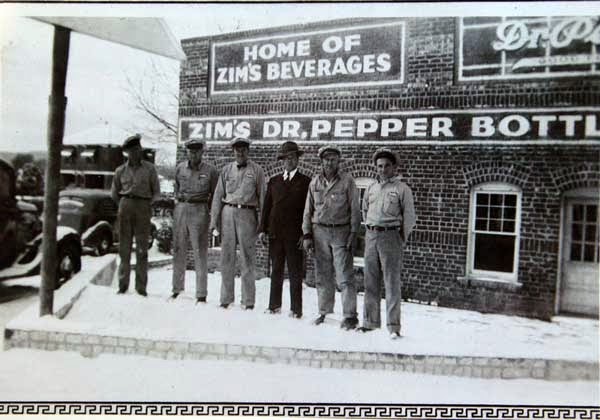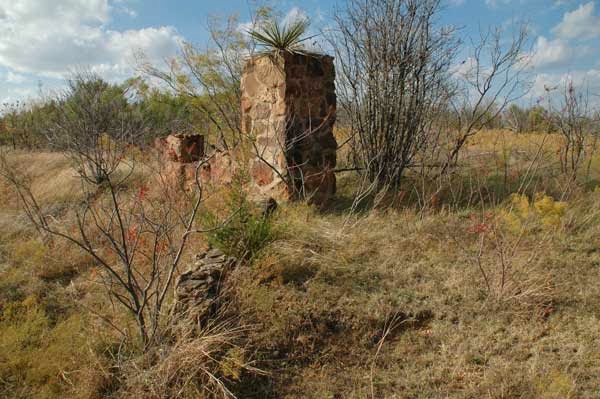Bankhead Highway’s Thurber Hill
Begins and Ends Many Lives
By Jeff Clark
Roads have memories, just like
people.
Last week I retraced the abandoned Bankhead Highway as
it climbed steep Thurber Hill, just west of Highway 16 in Eastland County Loop 254 leaves Interstate 20. I’m parallel
and north of Interstate 20, its big hill still hassling heavily-laden trucks as
they head toward West Texas . Migrating west,
1930’s travelers received their first heaping spoonful of the bitter medicine up
ahead.
Thurber Hill rises 200 feet in a
little over a mile. Model T’s attempted this incline backwards, sucking every available
ounce of horsepower from their feeble engines. Folks were often driving rattle
trap old vehicles that were one strand of bailing wire away from disaster. Gas
tanks were rarely full. You didn’t stop until (not unless) you ran out of gas,
broke down, or Nature called.
Thurber Hill remains miserly with
her secrets. Elders remember the roar of the Thurber-bricked roadway beneath
thin tires, before Highway 80 asphalt replaced it. Like so much that’s happened
here, this high-pitched ascent seems so unnecessary. I wonder what possessed
planners to carve their road here and not along the more gently ascending Gone-to-California
wagon road a mile to our south.
During Ranger’s too-brief oil boom,
twenty horsepower Tin Lizzies had two speeds – low and high. Gravity-fed gas
tanks lurked beneath their driver’s seat in early models. Facing an uphill
climb with a half-empty tank, fuel couldn’t reach the engine. That sputtering
noise under your hood told riders that life was about to get exciting. The early Fords had three pedals (low, reverse and
brake). When the high speed clutch band became worn, the reverse pedal was used
to back up the hill.
Today, the road narrows quickly
from the bottom, the ground falling away to a deep gorge on the right. Tall hillside,
then boulders soar above one’s sightline to the left. High grass and trees
reach out to reclaim this black and white striped road. You can go forward. You
can roll backward. There ain’t no turning back.
Given the tightness of this road, 12
feet wide in places, and the dramatic stay-away-from-the-edge curves, surely Pacific-bound
Tin Lizzies loaded with their family’s worldly belongings were followed on foot
by their kin. Today, mesquites and cedar line the ledge once punctuated by
guard rails (more for show, if hit very hard). Trucks that couldn’t make the climb
backed down. If you blew a hydraulic brake line coming down, you’d need to go
home and replace your shorts.
This first climb is the steepest.
When a heavy truck had to stop under strain of its load or a wobbly car broke
down, there were no shoulders. No place to turn around. There’s no changing
direction – unless you can fly. Coming down you’d have to stand on friction brakes,
your Model T a little too anxious to achieve supersonic speed. This 1920s path
struggles to peel itself away from the edge.
The road whispers sadly, “it
happened here, back in 1941.”
A stopped-in-the-road truck loaded
down with lumber blocked its lane, its broken axle not an easy fix. A nice car
stopped to help, pulling up beside. This is a blind corner, until the next car
coming along is almost upon you. Up at the top of Thurber Hill we see a second
truck begin its descent, full to the sideboards with happy workers heading to East Texas cotton fields.
When the lumber truck and the Good
Samaritan car come shockingly into sight, the farm workers’ truck driver knows
he has to stop. Pushing steel pedal hard to the floorboard, the doomed truck’s
brakes fail, its speed faster and faster falling down the runaway road toward
the star-crossed car and lumber truck. The careening truck’s driver aims heroically
for the space between the two vehicles, to avoid taking his passengers through
the rails and into mid-air.
Whatever horror this poor truck
driver imagines pales beside what happens next.
The big truck crashes full speed into
both lumber truck and car. Many were injured. Many needed help.
The Ervins stop to help, to take
the injured to Ranger’s hospital. The lumber truck driver lights flares to warn
off further catastrophe. People busy themselves helping the wounded. The call
goes in to Ranger – send help. Send everything you’ve got…
The Ranger Fire Department had a
siren mounted on top of their building that could be heard all over town. Its
wail announced fires, tornado warnings, world war black outs and other
emergencies. “Most of the young people who had access to cars would follow the fire
trucks to the scene,” Dorothy Elrod told me. Fire trucks, ambulances, and “all
of Ranger” left the little town, racing toward destiny.
They say the fire probably started
in the lumber, maybe a spark from the flares beneath its wheels. It might have
smoldered unnoticed in all the chaos. Two loaded Greyhound buses stopped behind
the accident. Their passengers piled off to get a better look. Cars from the
surrounding countryside pulled to a stop, blocking more of the road. Some say four
hundred souls watched as that lumber truck burst into flames.
The fire quickly spread, igniting a
saddle gas tank under the truck. A monstrous explosion erupted across the
panicked hillside, spewing burning gasoline across hundreds of onlookers like
high tide slamming into a seawall. James L. Ervin was blown off the cliff by
the blast. Faceless shapes ran in every direction across the hellish scene ablaze.
The few who’d remained in their cars were uninjured, reports later confirmed.
Whatever happened next, panic has
erased from the record. There wouldn’t have been enough firemen to go around. There’s
no water at the site. Time must have stopped, as shocked minds struggled to
take in the end-of-the-world tableau. The injured, the dead and dying were
taken to Ranger’s West Texas Hospital, whose rooms filled, whose hallway floors
were quickly littered with occupied mattresses. Others were taken to the City-County Hospital
Seven died that night. Thirty to
forty more are said to have perished later from burns or other injuries.
Several more were maimed for life. No one left unchanged.
“It was a very sad time since some
of our classmates were injured in the blast,” remembers Dorothy Elrod. Today
the road is eerily silent. “Nothing to see here,” this stretch seems to have learned
the hard way. A quick prayer, then back in the truck. I need to escape this
place.
Ironically, the paved road widens
to seventy feet not too much farther up the path, a place designed for ascending
cars and trucks to pull off and add water to overheating radiators, to let
descending car brakes cool. To marshal one’s courage for another attempt at the
summit.
Just up the hill on the north side
of the road, a long northern curve to the right is lined with two WPA-looking brown
stone gateways, marking the entrances to Scenic Point, a roadside park. People
could’ve walked here from the wide place in the road. There are at least three
barbeque pits built out of the same stone hiding in the brush. A rusted set of
bedsprings pulled up to one fire for warmth.
Once you enter the gateways, the
pavement stops. Vintage photos show this to be a scenic hillside for picnics. There’s
still a beautiful thigh-high rock wall lining the curving Bankhead out front.
Easter
sunrise services were held here. “I remember we were on high ground,” Dorothy
told me. “The scene looking east was breathtaking, especially when the sun
started rising. We had a sermon and sang gospel songs.”
Back in the
truck, the road finally reaches the crest of Thurber Hill. What takes a few
minutes on Interstate 20, takes much longer here. But this road’s not through
talking. As the pavement flattens, you notice concrete and brick ruins to the
south. This was the original hilltop gas station, before the complex moved west
to Ranger Hill when Highway 80 blew through. There’s a flat concrete slab
observation deck hanging off the hillside, from which you can see Thurber’s
Italian Hill many miles to the east.
Rejoining the interstate’s service
road up ahead, a cinder block building marks the location of Offield’s Truck
Stop and Café. Not too much farther and the real Ranger Hill awaits. Like so
much along this old highway, “what used to be” holds center stage.
Today I don’t much care what came
next – Highway 80 then I-20. Too much has been uncovered, too many wounds
unsealed. The gray asphalt reaches west finally toward Ranger, cutting a
slightly wider path through the cedar. Tens of thousands passed by this spot
heading toward, or away from something as our young nation reached adolescence.
A few souls never made it.
Interstate 20
caused the death of many Bankhead
Highway towns, I’m often told. But after today, I
think that’s a symptom, not a life sentence. I invite those folks to travel
Route 66, much less historically-important than the Bankhead brick and asphalt remnants
still snaking through their towns. Route 66 is raking in the cash.
Shorty Fox tells about when he and
Mutt Lee were traveling to Ranger in 1939. They’d been to Fort Worth to pick up lumber for a National
Youth Camp cabin or three, across from where the Ranger Library now sits. They
were driving a packed-full Chevy truck. It popped a spark plug, hitting the
inside of the hood like a snub nose bullet. The two men stopped, climbed out, scotched
the wheels with rocks, and made their repair (most of Shorty’s stories involve
duct tape or chewing gum, seems like). They got the truck running and started
up the hill.
I asked him about what he saw, as
they rode that old truck up the too-steep road. “Listen,” he told me, as
serious as he ever gets. “We’d just repaired a truck, we were loaded down with
lumber, and we were struggling straight up this big hill in first gear – a huge
drop off to the right. We were just happy to get to the top.”
I’ve always heard about the “big
hill” east of Ranger. Now I’ve driven it. I’ve listened to it speak. Thousands
of long-ago echoes can be heard, if this hillside road’s memory is to be
believed. I look back along the narrow road, its words softly speaking one last
time. “I was just happy to get to the top.”
Some
of this story occurs on private property, entered with permission. A full
recounting of the 1941 tragedy and its heroic aftermath may be read at www.angelfire.com/tx/rangerexes/1939a.htm
(used with permission). Special thanks to Barry Franklin, Ken Falls








So very interesting. I'm a native of Ranger and still live here. Had the chance to sell Leo some Thurber Bricks here probably 15 years ago. Good man. Wonder if he is still alive?
ReplyDelete